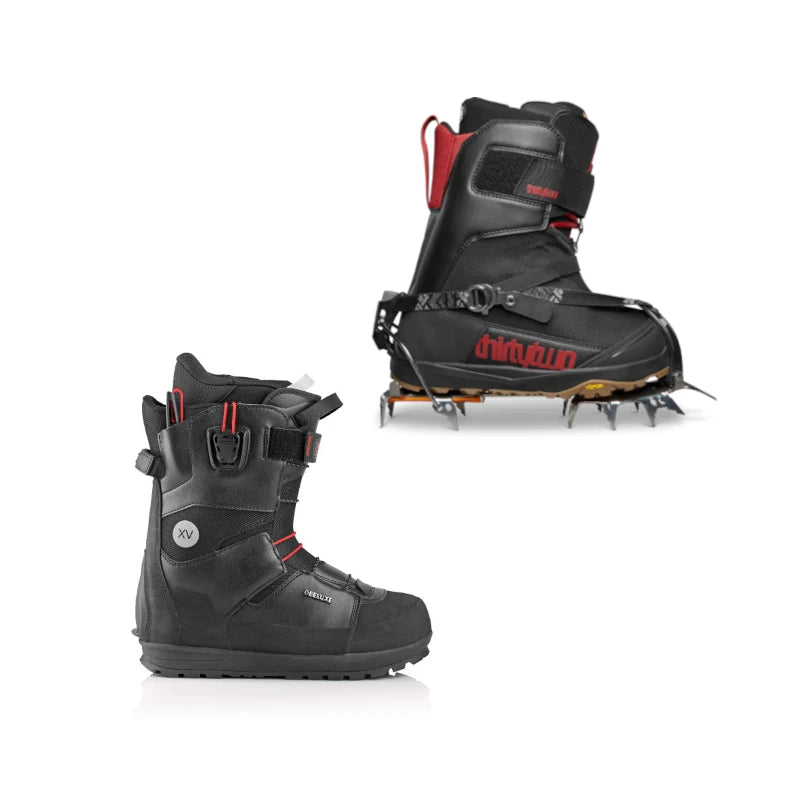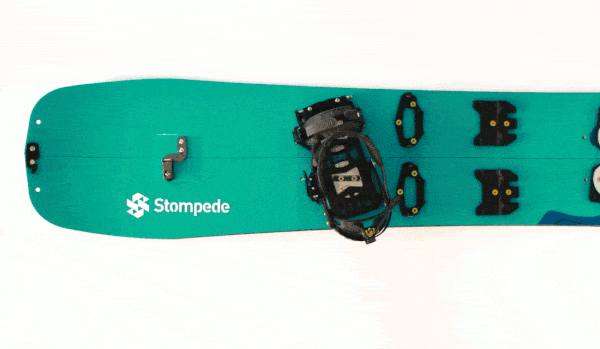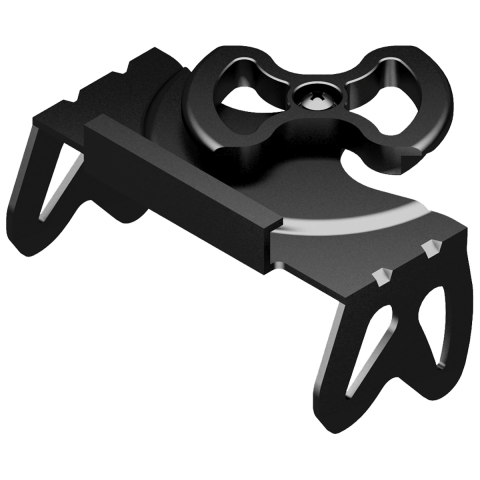Splitboarding is an easy way to escape the crowds at the lifts, get out in nature with friends and ski beautiful, untracked slopes. But every beginning is difficult. Therefore, we answer the following questions and topics here to make it easier for you to get started in the splitboard world.
What is splitboarding?
What is a splitboard & how does it work?
How do I find a suitable splitboard?
What else do i need for a complete splitboard setup?
- Splitboard bindings
Splitboard poles
Splitboard boots
Tired of queues at ski lifts on powder days and tracked slopes? Ready to explore the backcountry in search of the perfect run? If you answered “yes” to these questions and are not ready to give up the freedom of snowboarding, then we invite you to the wonderful world of splitboarding.
A splitboard is a snowboard that can be split into two "skis". By attaching special bindings and special climbing skins, you can use these splitboard halves to hike uphill in open terrain. Once you've reached the summit and found a good descent line, you can put the splitboard back together and you'll have a snowboard to enjoy a hopefully pristine and powder-filled descent. For snowboarders, splitboarding is the ticket to great experiences in nature and endless powder fun in the backcountry.
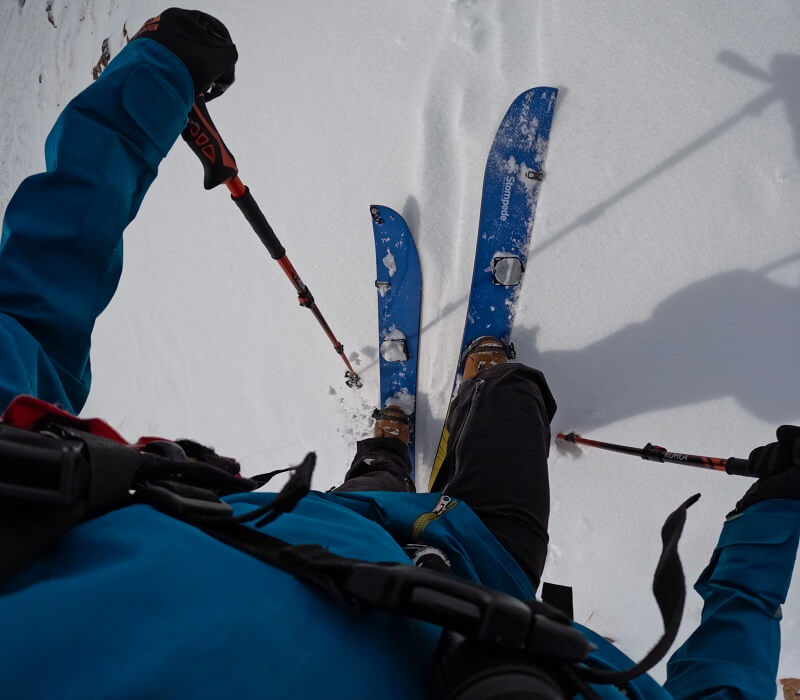
Riding untouched powder slopes is one of the most enjoyable things to do on a snowboard, but of course there are some risks that should be taken seriously. Before you head out into the backcountry, you need to have the right knowledge and tools to ensure your own safety and the safety of your partners. This includes appropriate training in avalanche awareness, basic first aid skills and knowledge of how to use your avalanche safety equipment). When taking your first steps into the backcountry, it makes sense to gain experience by taking avalanche courses or tours with experienced mountain guides. Under the following links you will find points of contact that can make it easier for you to get started:
It's simple: a splitboard is a snowboard that can be split in half and put back together. Combined with special binding systems, this means you can split your board in half and go uphill, only to reassemble it at the top to descend like a normal snowboard. Since you are no longer dependent on lifts, you can move freely on the mountain and discover untracked slopes.
10-15 years ago, self-made splitboards were still widespread. To do this, you took a “solid”, sawed it in half and, more or less adventurously, assembled a suitable binding and adapter. As with normal snowboards (often called “solids” among splitboarders), there are now a variety of splitboards on the market, with different shapes, materials and sizes to suit every taste.
Boards that leave the factory as splitboards offer many advantages. With a steel edge on the inside, splitboard binding-specific inserts and pre-installed clips, factory splits are ready to handle whatever you throw at them without having to saw up your favorite board.
Here you can see our Nordstau split in touring mode. This means the binding is mounted in walking mode and the climbing skin is on.
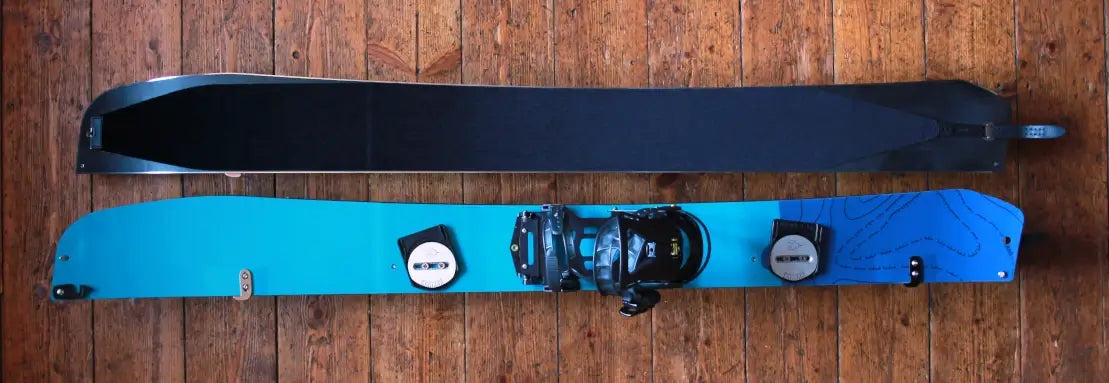
Choosing the right splitboard is similar to choosing a regular snowboard: you should choose a board that suits your weight, skill level, riding style, and the terrain you'll be riding on. Keep in mind that you will be using this board on different terrain than your regular snowboard. After all, there are no groomed slopes in the backcountry. Similar to regular snowboards, splitboards can be differentiated depending on their intended use and the terrain in which they work best.
Have you been snowboarding for years and now want to start splitboarding? Then you should make sure that you choose a board that doesn't restrict you going downhill! Many beginner splitboards are really only recommended for people who have no/very little snowboarding experience, as the materials used do not provide the necessary stability and smoothness that advanced riders need. This can quickly become a danger, especially in more demanding terrain. You don't have to worry about this with our boards, we only develop boards that we want to ride ourselves :D
If you are not sure which model, size or set suits you best when it comes to our boards or splitboard sets, we will be happy to help you. It's best to try out our board finder first! There you will be given an initial recommendation that suits you. This is also the best starting point for personal advice from our team. This means our experts already have your most important information and can provide you with a tailor-made recommendation.
Of course, just Brett isn't enough. You'll also need a few other pieces of equipment before you can head up the mountain.
Splitboard binding
Since the bindings also need a walking function for the climb, you cannot use a normal snowboard binding, but you need special splitboard bindings. These also differ from normal bindings in other ways:
- Quick, tool-free switching between touring and downhill mode
- Since splitboard bindings are designed for long climbs, they are usually designed to be more lightweight than normal snowboard bindings
- Special highbacks on the splitboard bindings can be adjusted with one hand to enable greater inclinations and thus steps.
You can find a brief overview of how the bindings in our shop work here .
Splitboard interface
The "interface" is the interface with which the bindings are mounted on the splitboard for both ascent and descent. Depending on the binding manufacturer, there are different systems that are generally not compatible with each other.
Splitboard “Hooks” and “Tip & Tail Clips”
Splitboard hooks are the connecting elements that can be found roughly halfway between the bindings and the ends of the board. Tip and tail clips are the connecting elements at the very front of the nose and at the very back of the tail of the board. Together with the binding interface, these elements ensure that the two halves of the splitboard are held together and provide increased torsional rigidity. But with our boards you don't have to worry because these connecting elements are already installed and adjusted.
Splitboard crampons
If you want to go outdoors with your board, we recommend always buying suitable crampons when buying a splitboard. You never know when you will need them. They can sit in your backpack for weeks, but once you're on an icy traverse, you'll be glad you packed them.
The sharp points of the crampons dig in and provide reliable grip, which can provide additional security, especially for splitboard beginners.
To ensure that the crampons fit your equipment, two things need to be taken into account:
- Only bindings and crampons of the same brand fit together. This means mixing (brand X bindings, Marky crampons Y) is not possible.
- Depending on the width of the board, different crampons widths should be used (we have listed the appropriate board models for the crampons in our shop).
Splitboard climbing skins
Splitboard skins are a very important piece of equipment. They provide the necessary traction for the climb. Climbing skins are strips of adhesive-coated fabric with tiny hairs. These hairs point towards the tail of your splitboard. If you push the splitboard half forward, it glides easily over the snow. However, when you move backwards, the hairs on the climbing skins stand up and get caught in the snow to prevent you from sliding backwards.
Climbing skins are available either as universal climbing skins or board-specific.
- Universal climbing skins are attached to the board via large hooks that are hung over the nose and tail of the board and must first be cut to fit the board.
- Board-specific splitboard skins are already cut to fit the respective board. Our boards have special holes that are precisely tailored to the matching EZ-Lock split board skins . In addition to being assembled in seconds, this also offers the advantage that the skins can be cut shorter, which saves weight. The biggest advantage, however, is the added safety, as the skins can remain on the board the entire time during the conversion, making it much more difficult to move the board away.
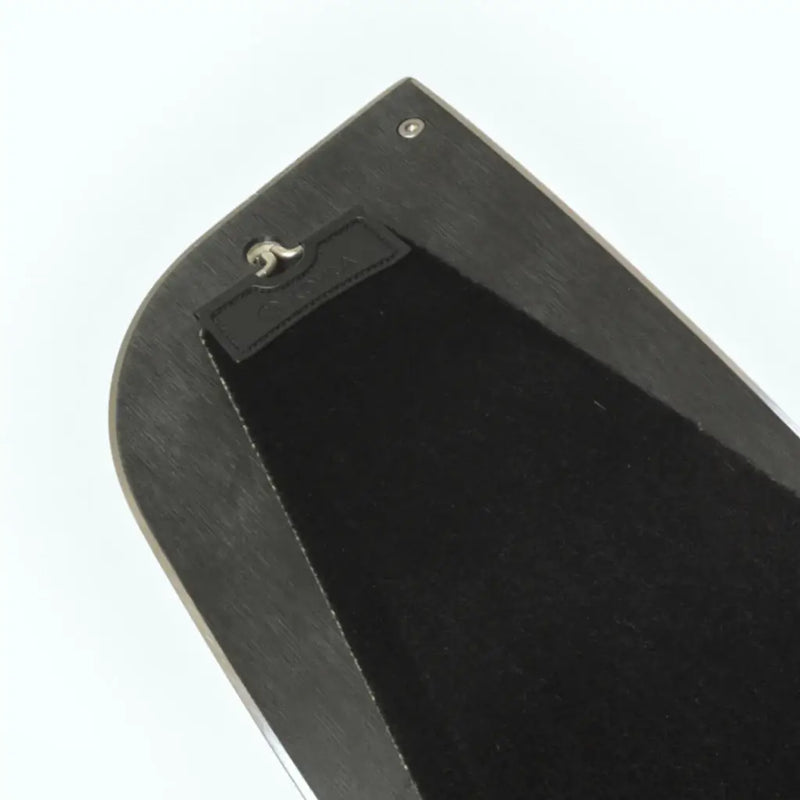
Our splitboard sets
Are you feeling a little overwhelmed? This is completely normal at the beginning, as there are many things that you have to pay attention to! But don't worry: we have preconfigured sets where everything is coordinated and 100% compatible. Just screw on the bindings and you're ready to go. Check out our selection of complete sets:
Splitboard poles
Although many snowboarders have little experience skiing, poles are essential when climbing the mountain. They provide balance, but most importantly, they allow you to move with your arms when walking over flat or slightly hilly terrain. Most splitboard poles use a three-piece or four-piece collapsible/collapsible design, allowing them to be compressed to a manageable size to store in your backpack for the descent.
Splitboard boots
We are often asked the question whether you can use the existing snowboard boots or whether you need special splitboard boots. At the beginning you don't have to worry about it: just use your worn-in boots!
After the first tours and with some experience, you can then consider whether special splitboard boots make sense for you. These have a number of features that are particularly useful on high alpine climbs. This includes:
- higher lateral stiffness, which gives more control in hard or steep traverses
- Shaft with less forward lean for longer stride ranges
- Rubber edge to prevent damage from rocks
- Crampons clips that allow crampons to be mounted quickly and safely
- Stable, non-slip sole, similar to mountain boots
